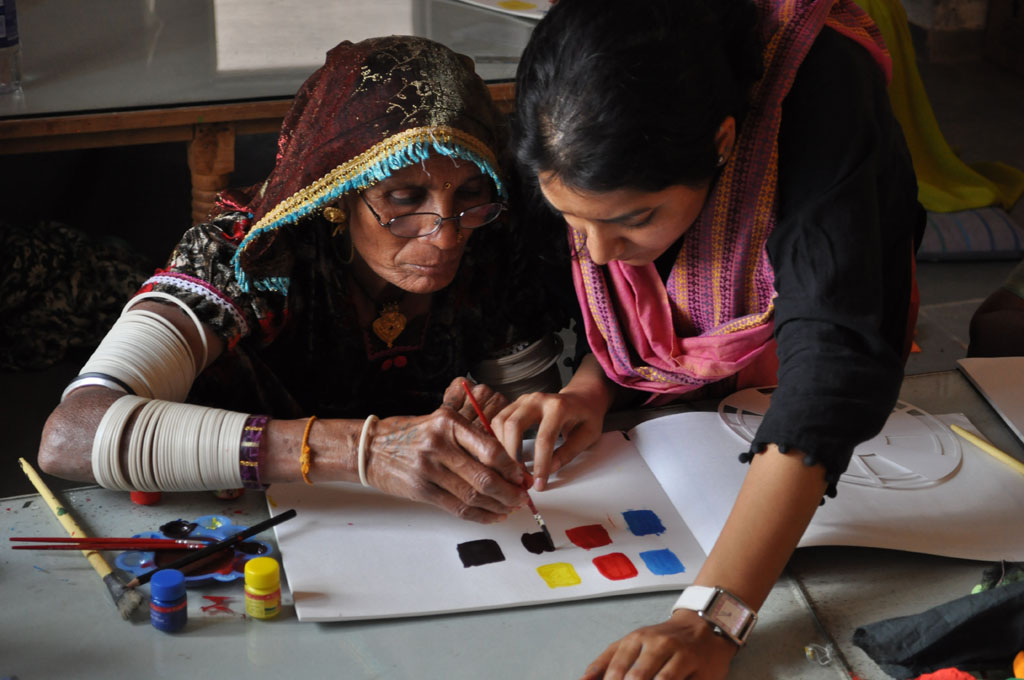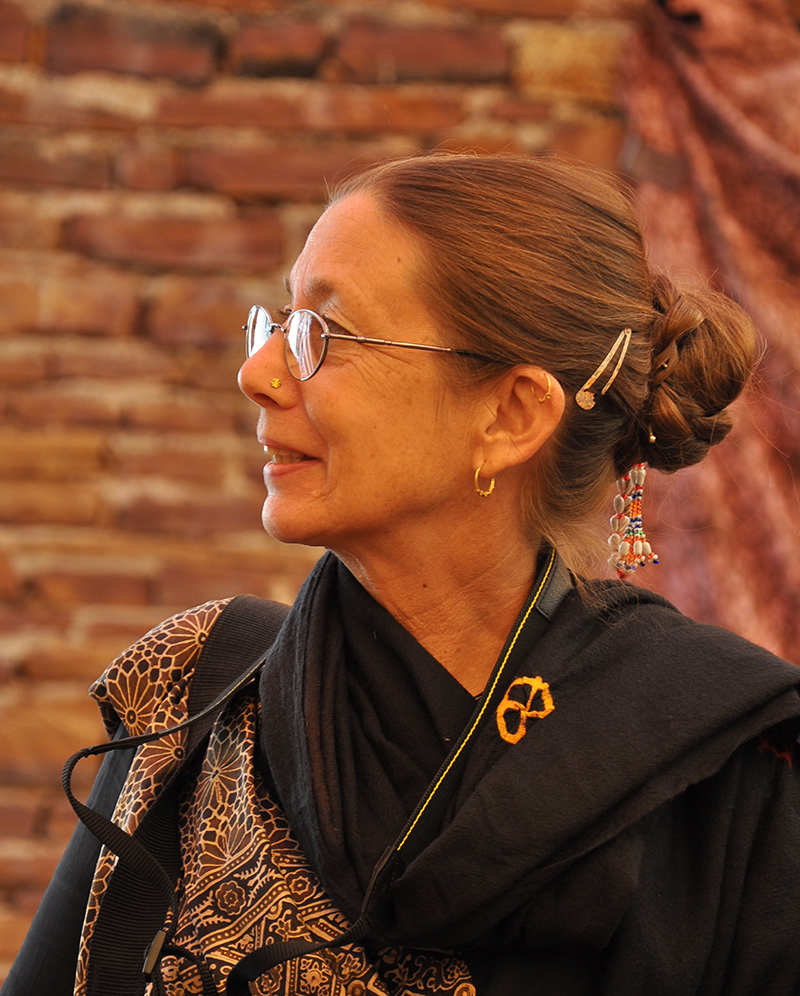The License to Learn
A few days ago, Faculty members from the Manchester School of Art came to Kala Raksha to initiate a collaboration. They showed our staff the technique of cyanotype— so old that it seems new. I watched the curiosity with which everyone observed and could not help but notice the difference between those who had graduated from or taught at Kala Raksha Vidhyalaya and those who had not. The graduates were open about their interest, and voiced their observations with excitement, while the others hesitated shyly. I realized that one gift of the course is the license to learn!
The good news was that Kala Raksha Vidhyalaya entered a competition for Social Innovation, and we made it to the short list. We entered under the category of education. In order to get to the finalists, we had to have an on site review, so two professors from a well known institute came to visit. They were present when the men from this year’s class were on a field trip to the Kala Raksha Museum and we were happy that they could see the excitement and concentration with which the weavers, printers and bandhani artists examined the objects in our collections, and hear the incisive questions and comments they made. They were learning about their own traditions, and their visions were already changing rapidly. Afterwards, over dinner, one professor told me that he had wondered why we wanted to enter the competition under the category “education,” but now he understood why.

However, when we did reach the stage of finalist and presented our project in the very tightly prescribed format, the jury conveyed to us (without opportunity for discussion) that our category should be changed to “livelihood.” One jury member commented, “Why do you have to teach design to artisans? Fabindia has designers who come and give designs, and that way everybody earns.”
And so we return to the point from which we began: people see artisans in their little box of being able to do and not think, the hands severed from the head. We use the term “artisans,” because it is gender neutral and seems somehow more respectful than “craftsmen” (or women.) An artisan is somewhere between an artist and a worker. Kala Raksha understands artisans as artists who work with materials such as yarn, fabric and dye. Most people understand them as workers.
But the extension of that is what amazes me. Thus, if you offer design courses to those workers, it is not education but livelihood. Would the courses at the National Institute of Design or Srishti School of Art, Design and Technology (some taught by individuals who also teach at KRV) be livelihood? Insofar that people attend these institutes expecting to get jobs, perhaps…. But somehow it seems that the identity of the activity has to do with the participants more than the activity itself.
Suddenly I think back to the ancient system of Varna and Jati. According to the Laws of Manu, education of shudras was a sacrilege. Shudras were created to serve the other two varnas without being critical. Education would encourage questioning, thinking in new ways, so it would interfere with the program. In the Shambuka Vadh of the Ramayana, Ram is directed by his rishi advisors to stop Shambuka, a shudra, from illegal education. This, Ram is told, will insure the progress of religion and culture. Ram executes poor Shambuka, and the gods are happy because this unworthy shudra is now prevented from entering heaven… Does that attitude still persist at a deep, even unconscious level?
Dr. Ambedkar recalled this story and vowed that had been present, he would have taken Ram to court. It makes me deeply sorry to think that little has changed since then.
I have heard an objection murmured that Kala Raksha is trying to make a mini National Institute of Design…. We would of course not be so presumptuous, and quite in contrast, the Vidhyalaya’s success is in its local quality. But we are approaching education in an innovative way. We aim to deliver quality professional education directly to people with little formal education, but for whom the material is important and useful. It is an example of how the under educated can be empowered to extend and utilize their traditional knowledge and participate more equally in the contemporary world.
We understand this as education, and the reason why we offer this education can be stated in two questions I would pose in response to, why not to just let Fabindia designers give design to the artisans?
1. Inventory carefully the skills and knowledge that the designer and the artisan each bring to the interaction
2. How much do each of these individuals earn through the interaction?
We got the award for runner up for social innovation in livelihood. The fact that the jury did not appreciate our work as education defines our challenge.



